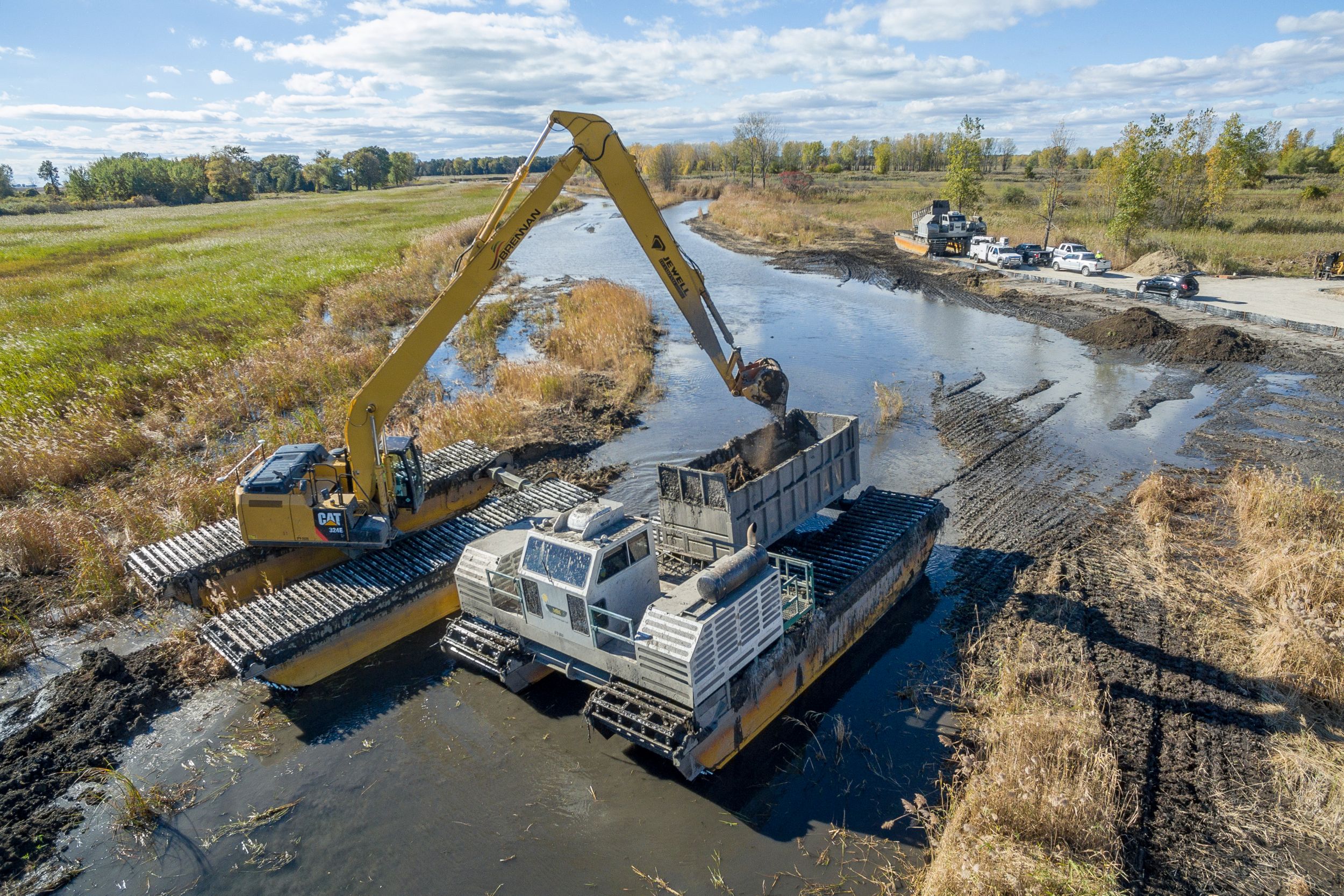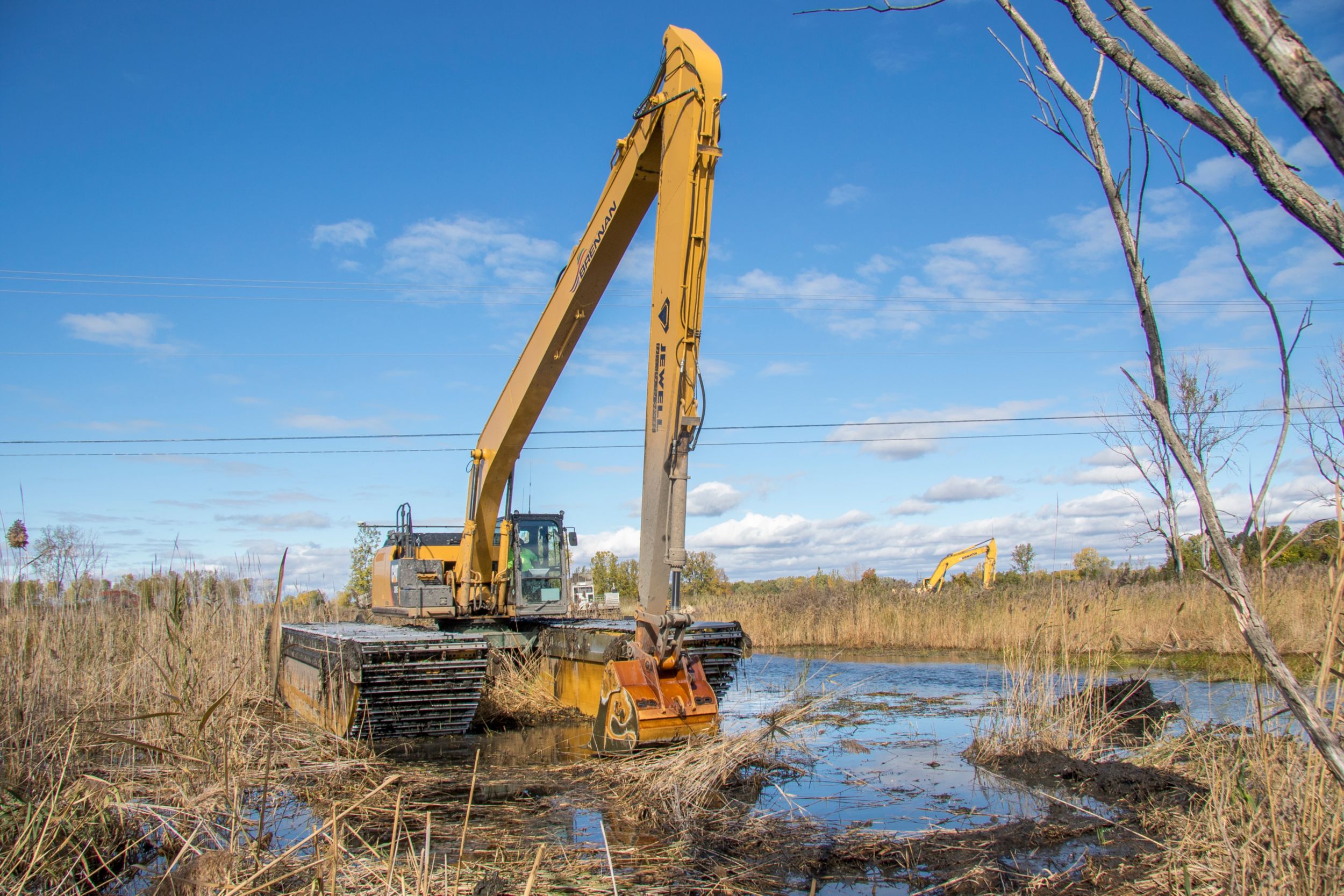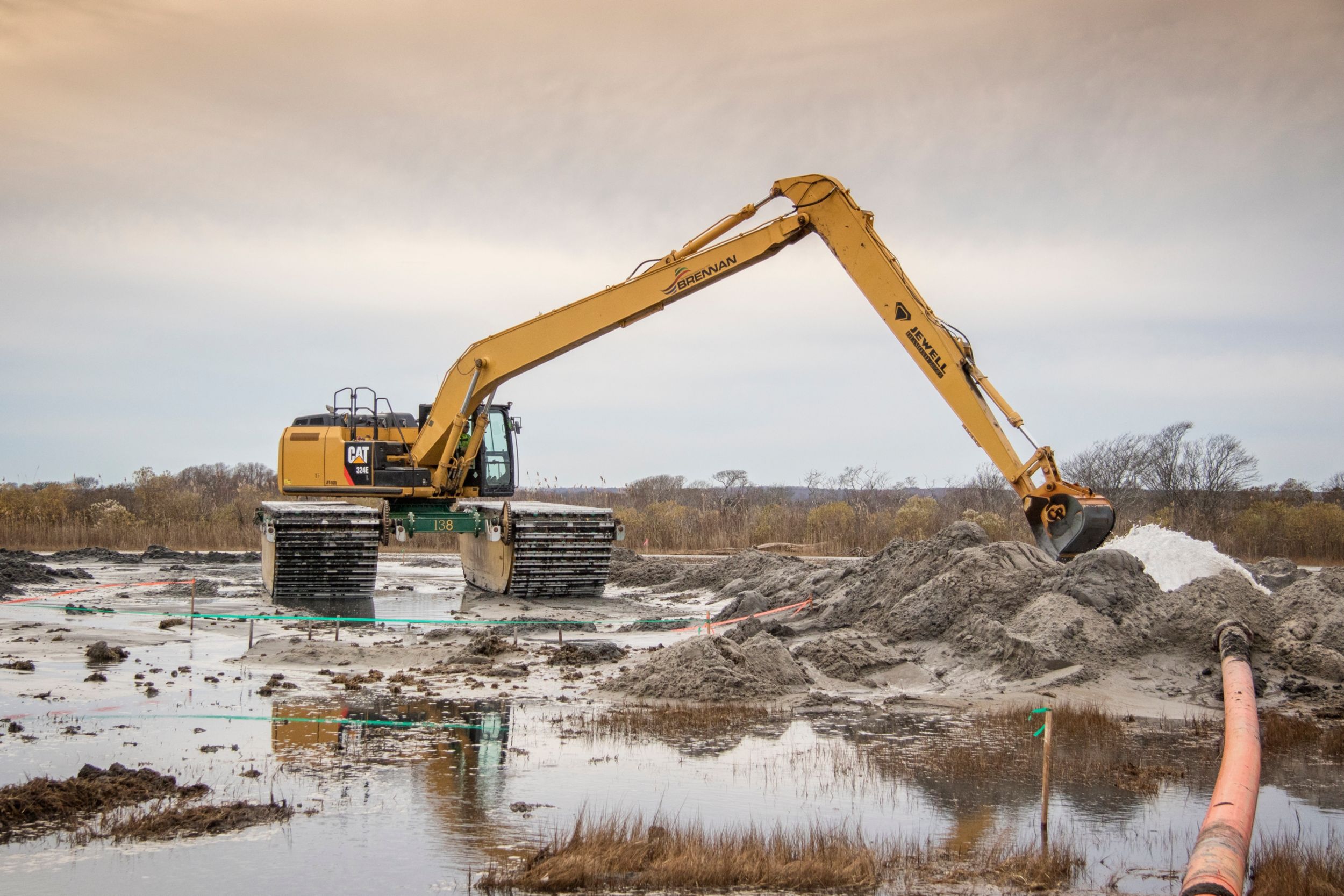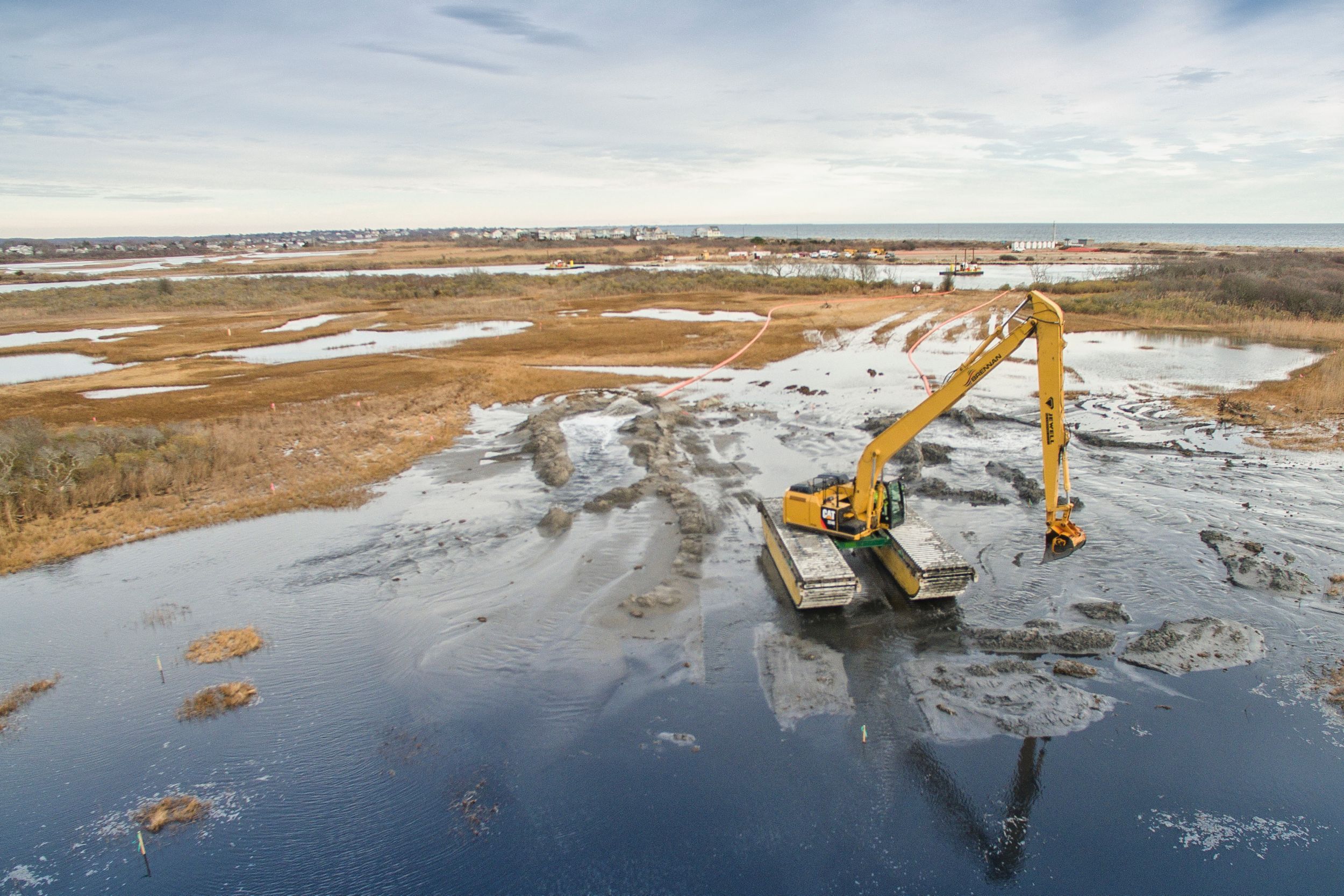Kayakers spend hours exploring the natural beauty of the numerous coves along the shoreline of Ninigret Pond in Charlestown, Rhode Island. Windsurfers zig-zag their way across the 1,539-acre coastal lagoon. And anglers reel in whitefish, smelt, winter flounder and northern pike. Clams, quahogs and blue crabs can also be found in the pond’s shallow waters.
The neighboring Ninigret Salt Marsh serves as a nursery for fish, feeding ground for wading birds and a nesting area for migratory birds. However, rising sea levels in Rhode Island have been drowning the natural area, which acts as a buffer to storms and provides protection to area residents. Vegetation in the marsh has been dying from increased flooding caused by rising sea levels. Hurricane Sandy in 2012 also took its toll on the area.
Within the Charlestown breachway in Ninigret Pond, sand has been accumulating as it is swept in by shoreline currents. This makes navigation difficult for boaters who enjoy the pond, and covers environmentally important grass beds.
The Solution
A recently completed Coastal Resources Management Corporation (CRMC) and U.S. Fish and Wildlife Department project addresses these issues, and restores a barrier island damaged by Hurricane Sandy. Approximately 30,000 cubic yards of material dredged from the breachway have added between six vertical inches and a foot of sediment to the marsh. This enables plants like eelgrass to grow, and the marsh and pond to thrive. Dredging also deepens the breachway channel to improve navigation for boats that use the waterway. The work improves the environment enjoyed by outdoor sports enthusiasts to the benefit of local businesses that provide services and goods to the thousands who enjoy Ninigret each year.
J.F Brennan Company, Inc., La Crosse, Wisconsin, dredged two sedimentation basins within the breachway channel. Sand was dredged using two eight-inch hydraulic dredgers and transported via pipeline back to the salt marsh and island. Specially equipped low ground pressure (LGP) dozers and environmentally sensitive amphibious excavators placed the sand. The amphibious excavators enabled the J.F. Brennan Company crew to work with minimum disturbance in areas that were simply too soupy for conventional machines.
Using sand dredged from the channel, rather than trucking in materials, helped the contractor work more efficiently. And to achieve the best environmental results with dredging, it is always preferable to reuse the sand as a resource whenever possible to avoid trucking in material.
CRMC coastal policy analyst Caitlin Chaffee says, “J.F. Brennan’s use of amphibious excavators minimizes the impact to vegetation in the marsh, and their impact on the marsh is really next to nothing.”
After dredged materials were spread and graded, a variety of salt marsh grasses were planted. Over time, the grasses will cover the area, helping the marsh to recover.
Andrew Timmis, director of business development for J.F. Brennan, cites three key goals for the Ninigret project:
- Environmental—Wetland restoration and increasing the natural vegetation;
- Economical—Enhance the availability of the marsh as a park and camping area, as well as protecting the back marsh and pond;
- Sustainability—Reconstruction and regrowth of the marsh with minimal disturbance.
“The locals are ecstatic about the environmental improvements and the town of Charleston is happy to again have access to their homes and marinas on the pond,” says Timmis. “The key to success here at Ninigret has been combining established technologies—such as hydraulic dredges with newer GPS technology on amphibious excavators—to enhance and bring back the environment.”
The project will make the marsh more resilient to rising sea levels, slow the entry of sediment into the pond and improve navigation by creating a deeper channel. This means that kayakers, windsurfers, anglers and others who enjoy Ninigret Pond and the natural beauty of the area will be able to do so for decades to come.
“J.F. Brennan’s attention to jobsite safety, reduced emissions and sustainable machine maintenance procedures and all work being performed in a specific, controlled manner have all combined for best practices here at Ninigret. We really hit the jackpot with J.F. Brennan,” says Danni Goulet, PE with the CRMC.
Ecological monitoring of the site is ongoing, and is being continued after completion of the work.
Purpose-Built Machines
Dredging is niche work, and to be completed efficiently requires purpose-built machines. Caterpillar provides dredging contractors with everything from the smallest Cat® skid steer loader to the largest hydraulic excavator.
To further support dredging contractors, OEM Solutions offers specialty versions of many Cat machines. In addition, Caterpillar provides dual-fuel engine options that use Liquefied Natural Gas to reduce emissions and improve fuel efficiency in certain applications.
Visit Cat.com/dredging to learn more about other specialized and purpose-built machines available to improve waterway work.
RELATED STORIES:




